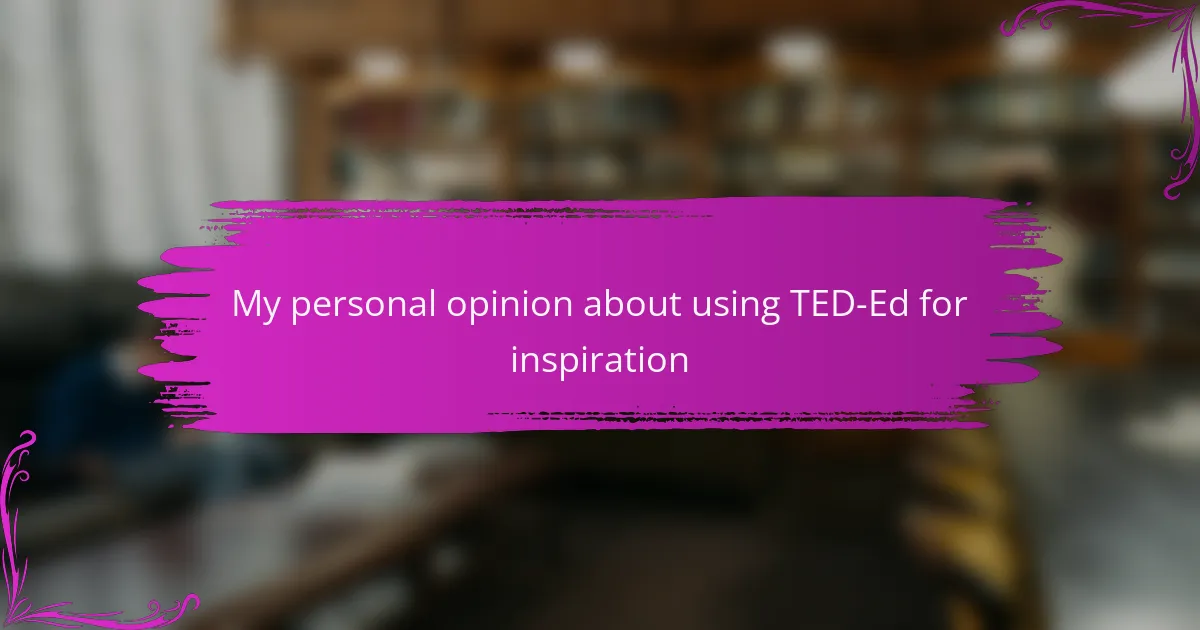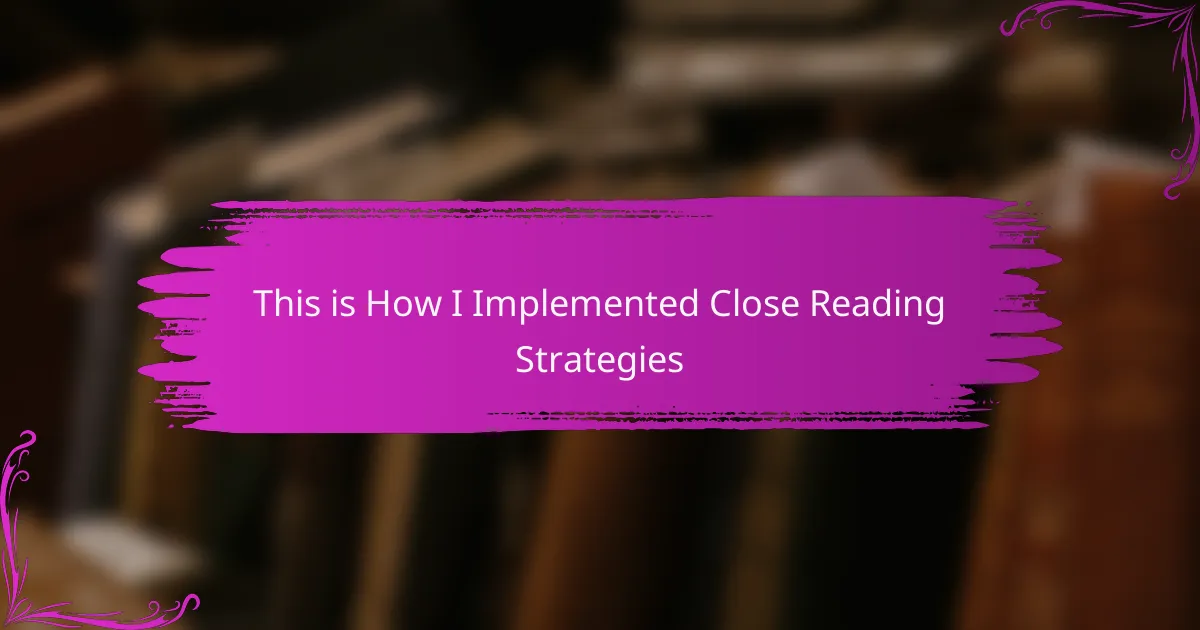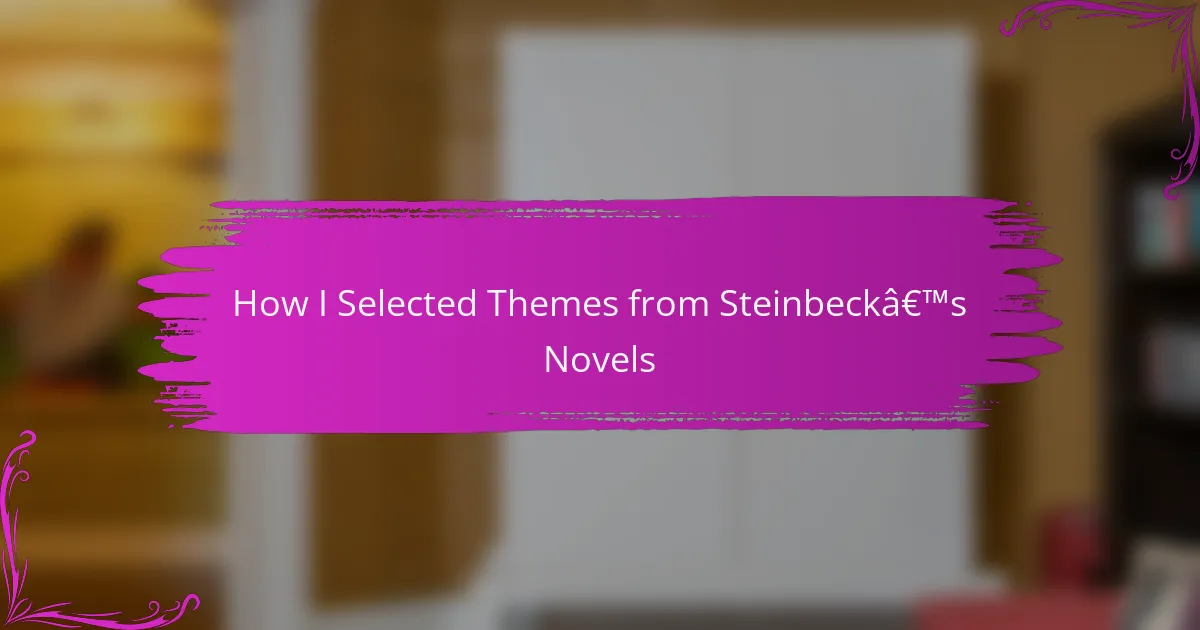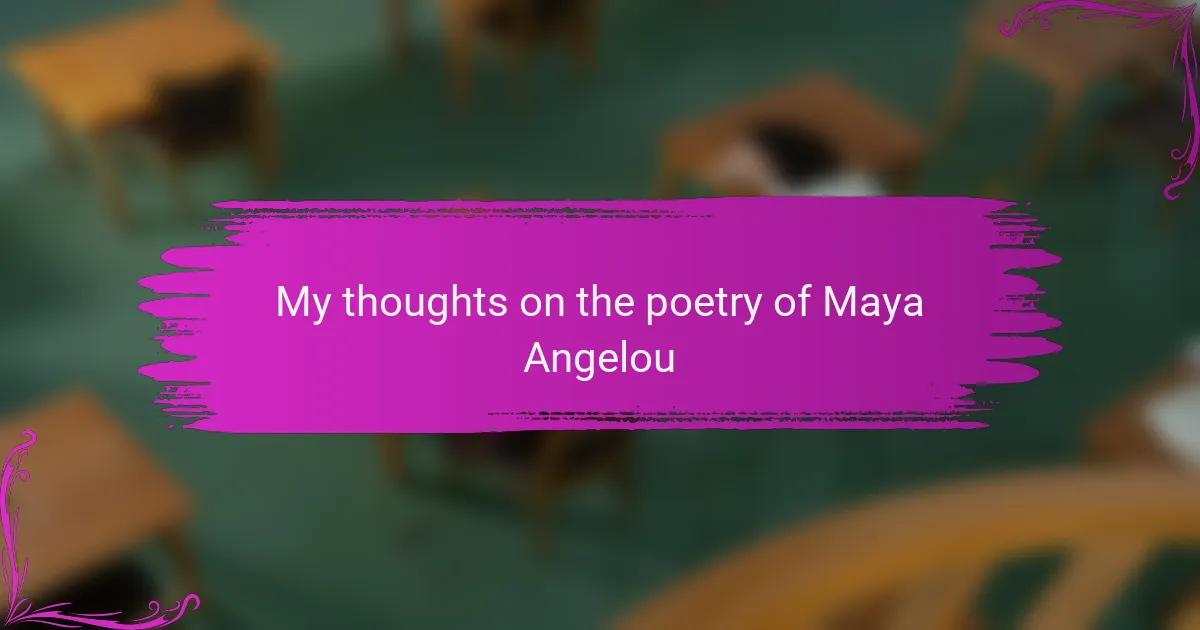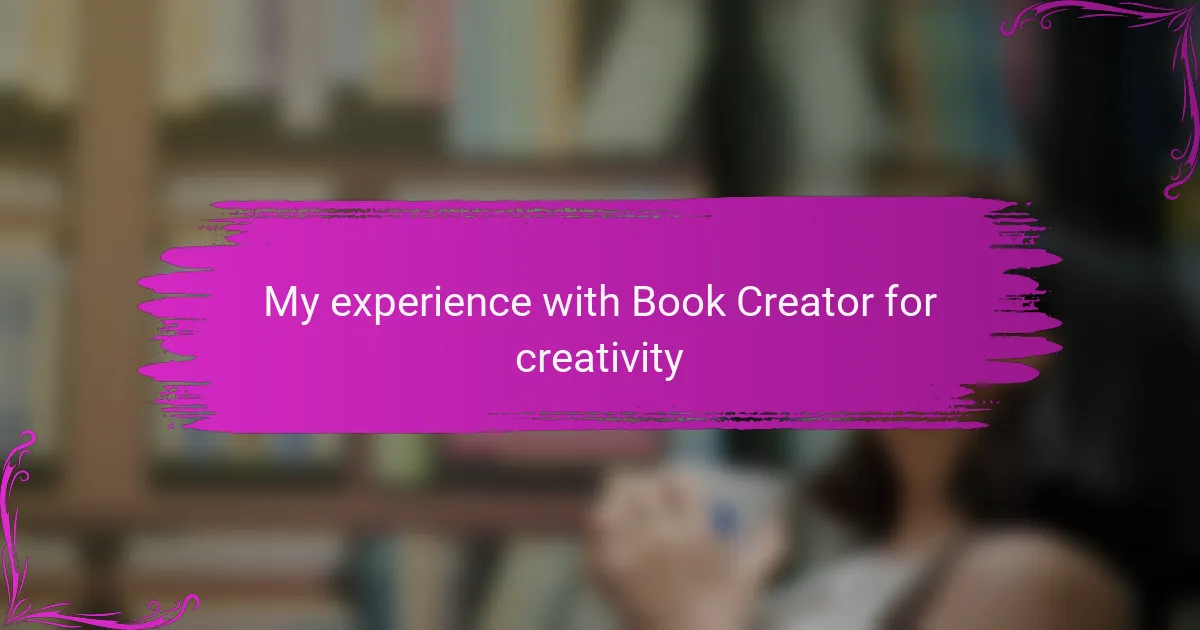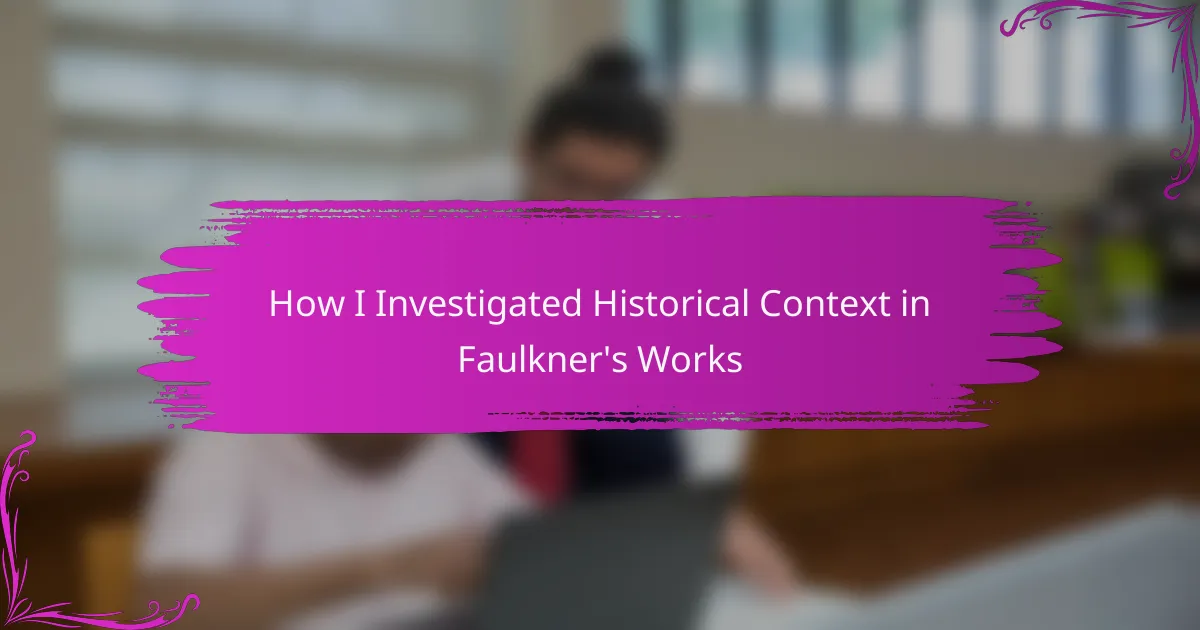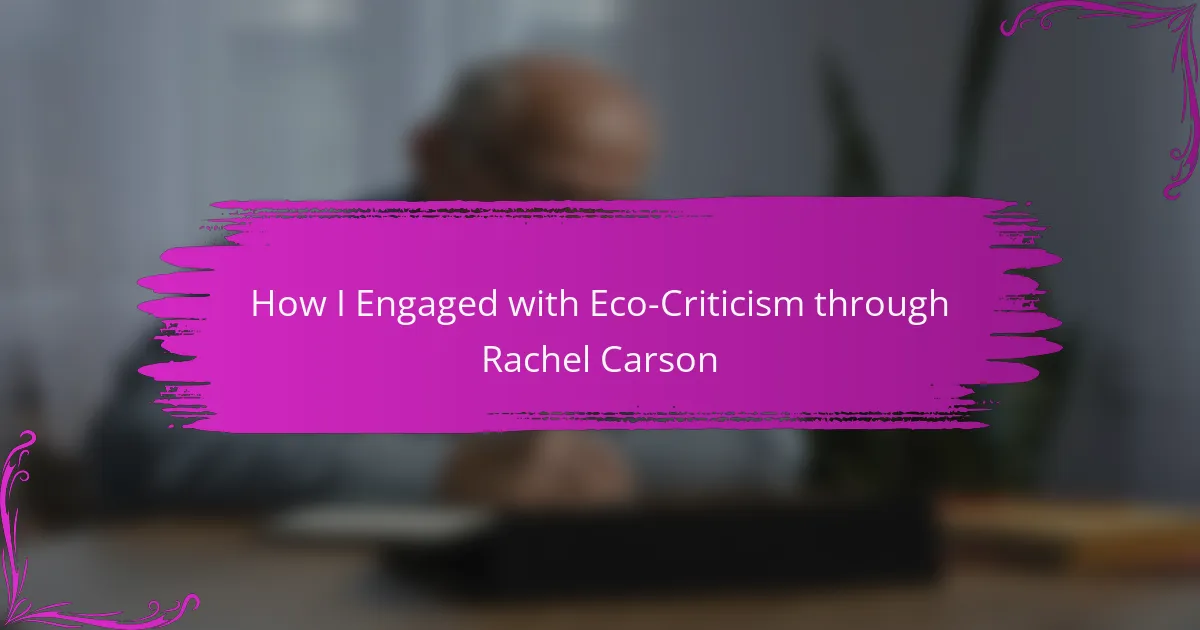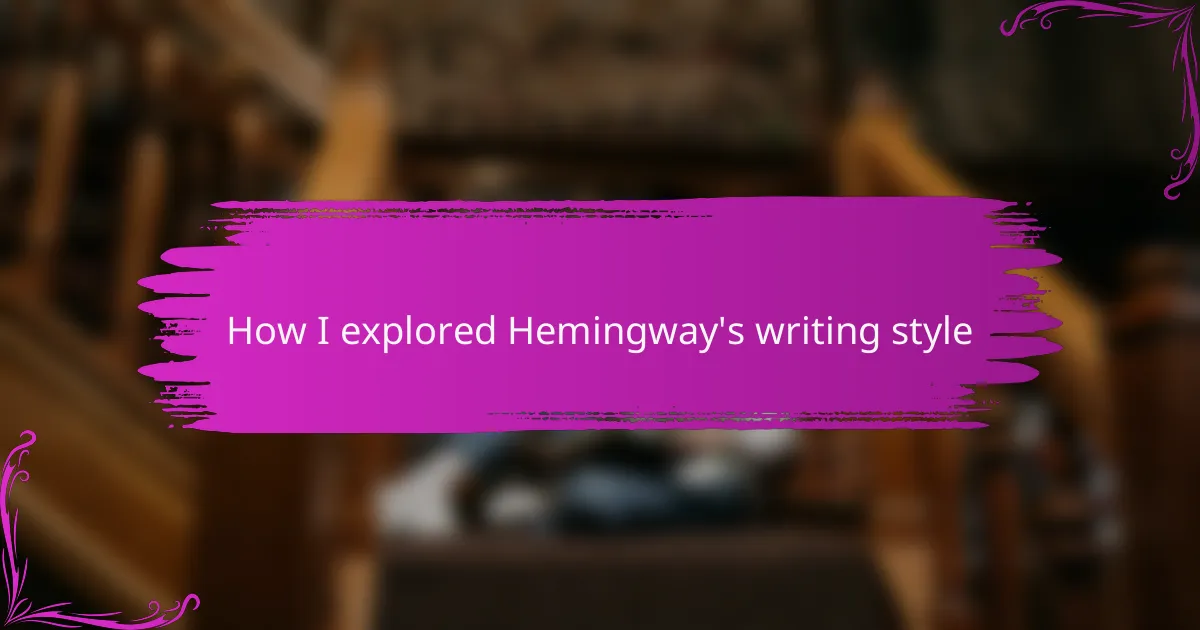Key takeaways Multimedia resources, like TED-Ed, enhance literature learning by making complex concepts relatable through visuals and interactivity. Engaging discussions and community sharing of insights significantly improve comprehension and critical thinking in literature education. TED-Ed videos offer tailored lessons that spark interest and encourage deep exploration of literary themes, enhancing the learning experience. Personalized lesson […]
Key takeaways Aristotle’s Poetics emphasizes the unity and purpose in storytelling, encouraging every element to contribute to the narrative as a whole. The themes of catharsis and mimesis highlight the emotional engagement and connection between art and life, enhancing the reader’s experience. Literature education fosters critical thinking and empathy, allowing individuals to explore diverse perspectives […]
Key takeaways Close reading enhances understanding by encouraging deep analysis of language, structure, and meaning in texts. Strategies like annotating, guided questions, and partner discussions foster student engagement and critical thinking. Digital tools and graphic organizers can improve collaborative learning and help students visualize connections within the text. Close reading promotes emotional connections and personal […]
Key takeaways Themes in literature, such as social injustice and resilience, foster empathy and critical thinking in students, making texts more relevant to their lives. Steinbeck’s novels reflect historical and social contexts, prompting readers to connect deeply with characters and their struggles. Incorporating themes into teaching practices encourages meaningful discussions, allowing students to relate literature […]
Key takeaways Deconstruction challenges fixed meanings in texts, encouraging multiple interpretations and deeper critical thinking. Applying deconstruction involves identifying dichotomies, questioning assumptions, and embracing ambiguity to enrich understanding. Engaging with deconstruction can transform one’s reading experience, making literature feel dynamic and alive. Collaborative discussions can help overcome challenges in understanding complex texts, enhancing insight and […]
Key takeaways Maya Angelou’s poetry explores themes of resilience, identity, and empowerment, often drawn from her personal experiences. Her use of vivid imagery and rhythmic language creates powerful emotional connections with readers. Poetry in education fosters emotional expression, critical thinking, and creativity, allowing students to engage deeply with social issues. Recommended resources include her autobiography […]
Key takeaways Literary education resources, such as Book Creator and Project Gutenberg, enhance creativity and understanding in literature. Creativity is essential in literature as it fosters emotional connections and encourages innovative thinking. Book Creator offers features like multimedia integration and collaboration tools, which enrich the learning experience for students. Through various projects, Book Creator allows […]
Key takeaways Understanding historical context enhances the depth of literary works, revealing how time and societal dynamics shape characters and narratives. In Faulkner’s writings, elements like post-Civil War tensions and the Great Depression significantly influence character development and themes. Utilizing primary sources and engaging in discussions can deepen one’s analysis of a literary text and […]
Key takeaways Eco-criticism examines the relationship between literature and the environment, promoting awareness and action on ecological issues. Engaging with Rachel Carson’s works, particularly “Silent Spring,” stimulates emotional responses and fosters a sense of responsibility towards nature. Teaching eco-criticism through literature encourages critical thinking and holistic understanding of environmental concerns among students. Integrating creative projects […]
Key takeaways Hemingway’s writing is characterized by simple, concise sentences that reveal complex emotions, employing the “Iceberg Theory” to suggest deeper meanings beneath the surface. Dialogue in Hemingway’s works serves to develop characters and enhance tension, creating an authentic feel in his storytelling. Literary analysis enriches understanding of themes, fosters emotional connections to texts, and […]
